
Introduction
100th Anniversary Issue
Centennial Harvests:
The College Pump
The Readers Write
The Undergraduate
Harvard Portrait
Bulletin Boards
Boom and Bust: 1919-1936
War and Peace: 1937-1953
Baby Boom to Bust: 1953-1971
Century's End: 1971-1998
Harvard Magazine

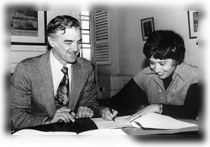
|
Radcliffe and Harvard negotiate a "nonmerger merger" in 1971, enabling full coresidence in both Colleges. A combined Harvard-Radcliffe admissions and financial-aid office debuts in 1975. In 1977 Presidents Derek Bok and Matina Horner sign an agreement by which (in part) Radcliffe delegates to Harvard responsibility for instruction and daily management of undergraduate life. In 1998, Radcliffe's possible demise as a college becomes a hot topic (see Reinventing Radcliffe). RICK STAFFORD/HARVARD UNIVERSITY NEWS OFFICE |
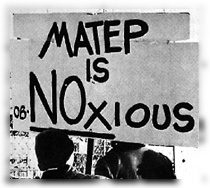
|
With many good intentions, planning begins for MATEP, a new Medical Area power plant. Its potential energy and environmental benefits are eclipsed by flawed planning and spectacular cost overruns. Budgeted at $50 million, the facility eventually costs seven times that. It is sold for $147 million in 1998. RUSSELL SMITH |
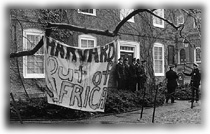
|
Students occupy Massachusetts Hall to protest Harvard's investment in Gulf Oil, a company active in colonial Angola. The University's South African investment connections keep the issue of shareholder responsibility alive, and provoke sharply contested Overseer elections, culminating in the victories of four petition candidates, including Desmond M. Tutu, LL.D. '79. RICK STAFFORD / HARVARD UNIVERSITY NEWS OFFICE |
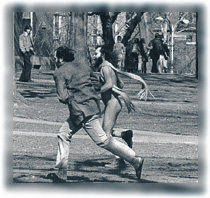
|
Streaking becomes a national pastime. Disgrace falls upon Harvard when a Cambridge police officer outruns and arrests the football team's unclothed kick-returner. RICK STAFFORD / HARVARD UNIVERSITY NEWS OFFICE |
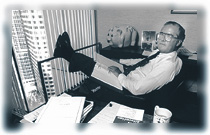
|
Harvard Management Company, an in-house investment firm, assumes responsibility for endowment assets of $1 billion. Walter Cabot '55, M.B.A. '59, introduces the use of modern portfolio tools, and the endowment approaches $13 billion by mid 1998. JIM HARRISON |
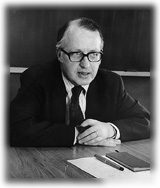
|
Led by Dean Henry Rosovsky, JF '57, Ph.D. '59, the Faculty of Arts and Sciences examines undergraduate education and creates the Core Curriculum, based on "approaches to knowledge" in literature and arts, historical study, social analysis, moral reasoning, foreign cultures, and science. RICK STAFFORD / HARVARD UNIVERSITY NEWS OFFICE |

|
Party animals: Harvard celebrates its 350th anniversary with academic symposia, addresses by Prince Charles and Secretary of State George Shultz, protests over apartheid, and a Disneyesque spectacle cum fireworks at the Stadium. MIKE QUAN / HARVARD UNIVERSITY NEWS OFFICE |

|
Following a 13-year drive to organize support staff, the Harvard Union of Clerical and Technical Workers narrowly wins a representation election--a vote challenged by the University. In November, Harvard concedes, and the first HUCTW contract is signed in 1989. RICK STAFFORD |
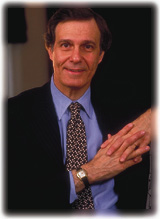
|
Neil L. Rudenstine, Ph.D. '64, a student of Renaissance literature |
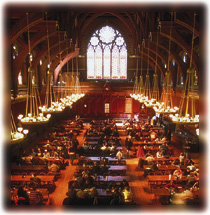
|
Faculty expansion, facilities renewal, and financial aid are among the goals of the $2.1-billion University Campaign, the first Harvard-wide fund drive, launched 10 years after the conclusion of the $358-million Harvard Campaign. An early result: students again dine in Memorial Hall in the great space now magnificently restored and renamed Annenberg Hall. JIM HARRISON |